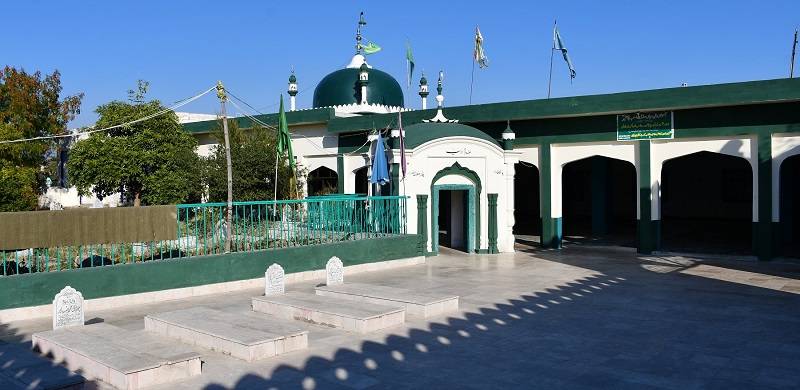
Kallar Syedan tehsil in Rawalpindi district is home to many shrines which belong to different Sufi orders. One such Sufi shrine is of Murid Khan who is popularly known as Haji Baga Sher, the white lion. The shrine is located about 8 km southeast of Kallar Syedan town at Darkali Mamori village, which is now popularly known as Darkali Sharif. There are three villages by the name of Darkali in Kallar Syedan tehsil: Darkali Mamori, Darkali Shershahi and Darkali Syedan. According to Waja Tasmia Dehat Pargana Dangali wa Pharwala by Raizada Brijnath, Darkali was founded in 786 AH/1384 AD by Dargas Brahman. Later the village was uninhabited and another tribe Kalyal settled in the deserted village. Mamori who was the son of Jamal from Kalyal tribe became famous in the area for his literary works in Persian, and the village came to be called after him Darkali Mamori. The graves of Mamori and his descendants are located west of the mosque and east of the shrine of Mian Haji Baga Sher. One grave in the graveyard near the mosque bears the name of Chaudhry Qutab Uddin Fateh Din with a genealogy going back to Mamori Khan son of Jamal Khan.
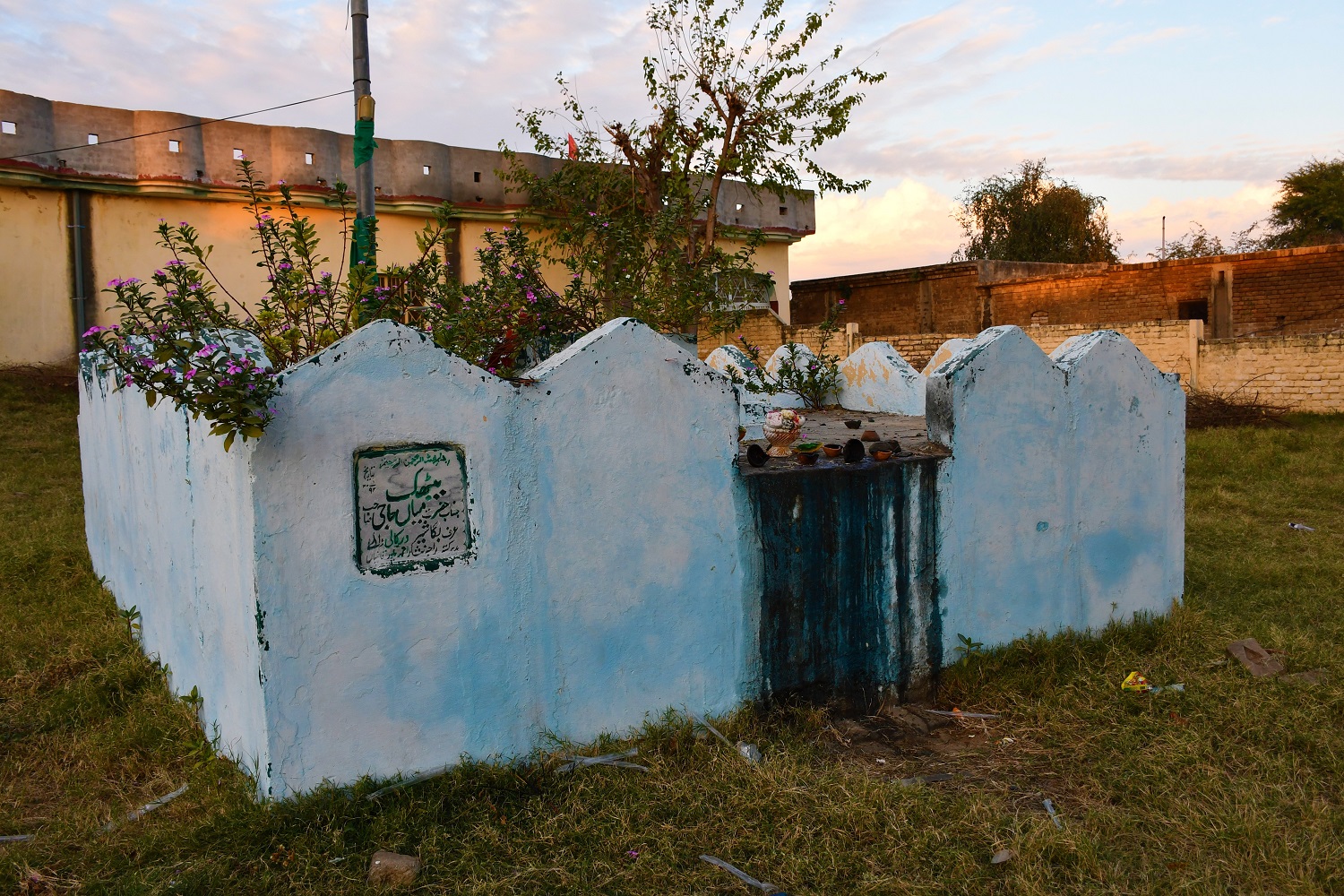
Darkali Shershahi village, which is located about 5 km west of Kallar Syedan town, is believed to have been founded by Sher Khan Bhakral who was a noble at the court of Quli Khan Gakhar. He was a resident of Devi village (now in Gujar Khan tehsil) and founded Darkali Shershahi when he was bestowed a jagir (fiefdom) by Quli Khan Gakhar.
About 2 km west of Darkali Mamori/Sharif is located Darkali Syedan, which is famous for the shrines of Qadiri Sufi saints Pir Mehar Ali Shah Gilani alias Banbriyan Wali Sarkar and his son Pir Raham Ali Shah Gilani.
Darkali Mamori which is now called Darkali Sharif or Darkali Mian Haji Sahib is known in Kallar Syedan for the shrine complex of Murid Khan alias Mian Haji Baga Sher who was a deputy of Pira Shah Ghazi Qalandar (d.1742), an eminent Qadiri Sufi saint whose shrine is located at Khari Sharif in Mirpur district in Azad Kashmir. There were many eminent deputies of Pira Shah Ghazi Qalandar. Mian Haji Baga Sher was the most outstanding deputy of Pira Shah Ghazi Qalandar. He and his deputies and disciples spread the teachings and Sufi thought of their mentor Pir Shah Ghazi Qalandar. According to M. Zaman Khokhar, the author of Gujar Khan-Kahuta Ruhaniyat Ke Ainey Mein (2004), Murid Khan was born in Maldev village near Dina in the present Jhelum district.
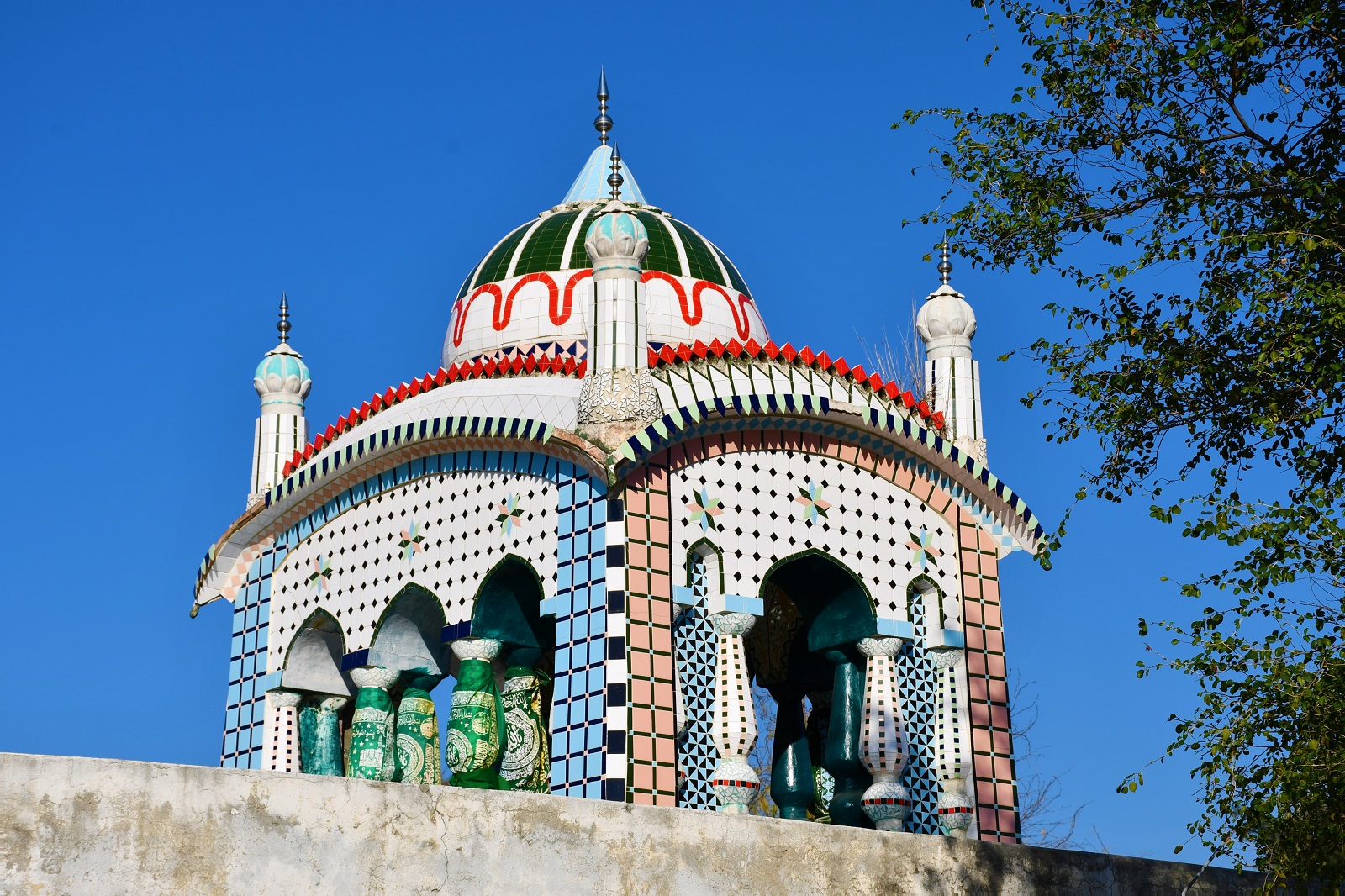
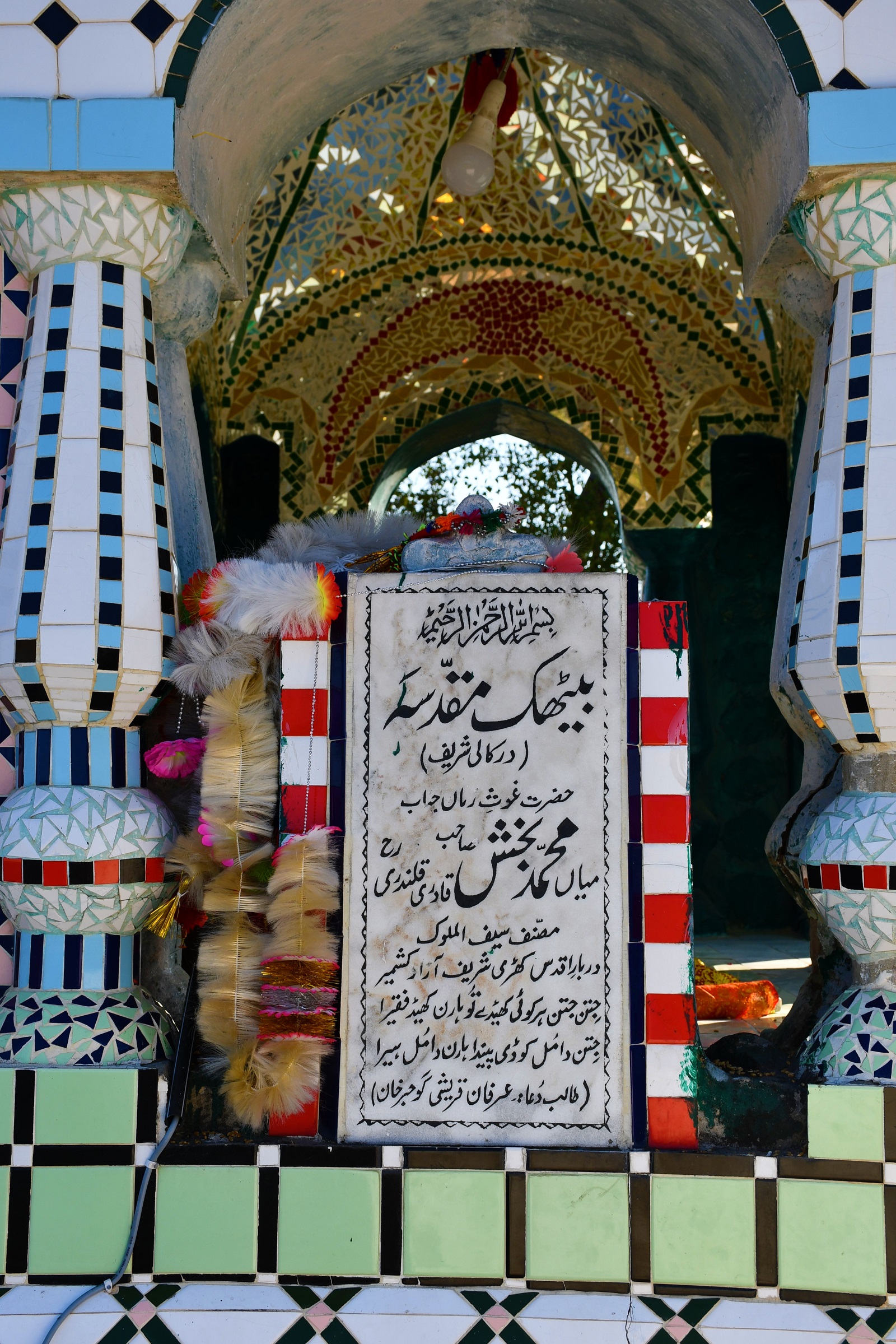
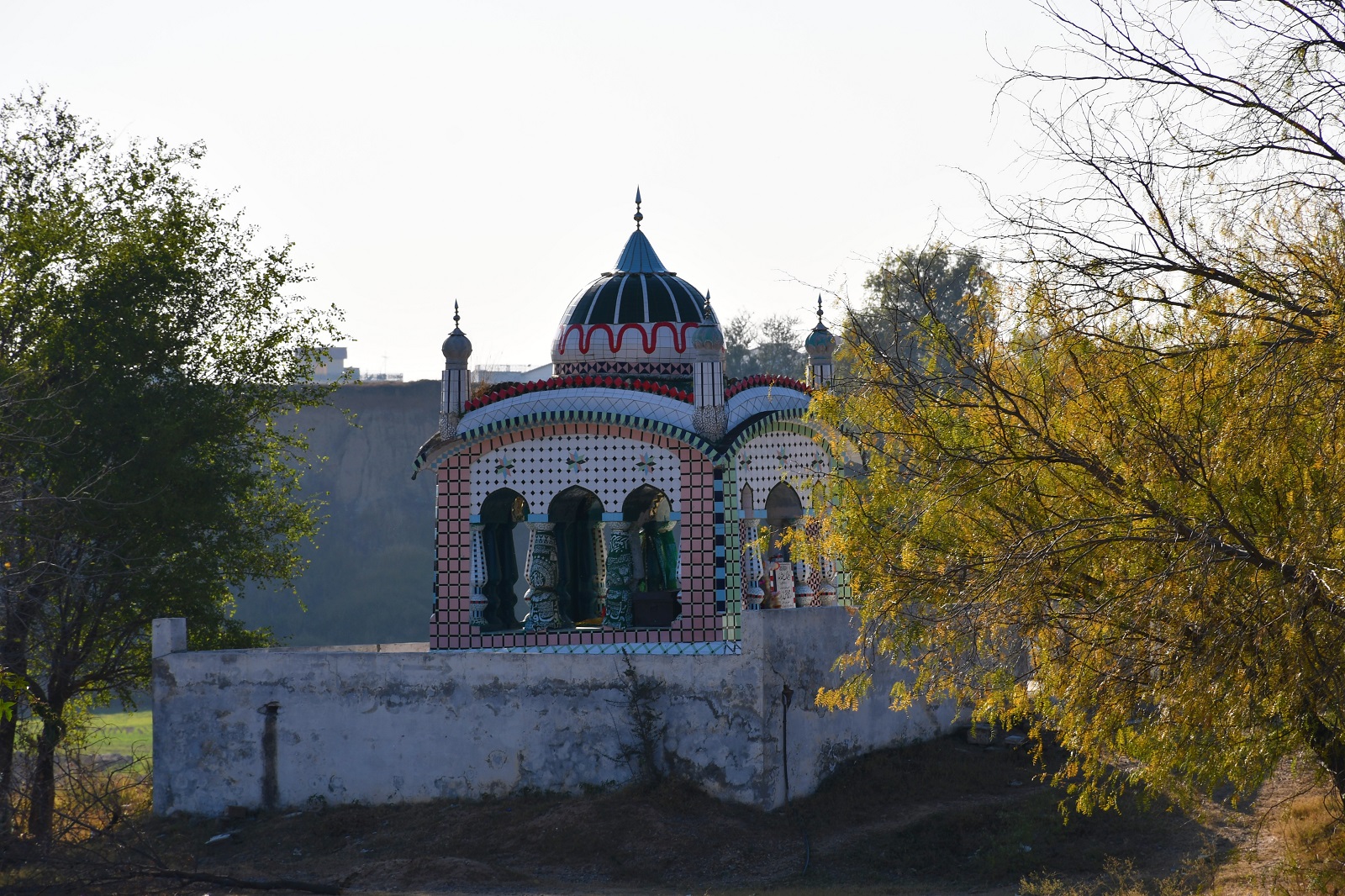
Mian Muhammad Bakhsh Qadiri (d.1907) writes in Tazkira Muqimi that Mian Haji Baga Sher was a military officer in the army of Mughal emperor Muhammad Shah (d.1748) and 4,000 soldiers were under his command. Mian Haji Baga Sher saw Pir Shah Qalandar in his dream, who instructed him to meet him. It is believed that he did accordingly and went to meet Pir Shah Ghazi at Malot in Kashmir and became his disciple. There are many accounts about how he acquired the title of Baga Sher. In this regard, M. Zaman Khokhar believes that when Murid Khan left his job and went to meet Pira Shah Ghazi Qalandar at Malot, Pir Shah Ghazi Qalandar looked at him from a distance remarked that “the white lion is coming!” Mian Muhammad Bakhsh Qadiri’s account is more authentic, which states that when Murid Khan first met Pir Shah Qalandar, he was greeted by the name of Naseeb Khan. His beard had turned white and in this context, he was called “Baga Sher.” He has mentioned this title in his poetry too. Moreover, I believe that the term Baga Sher is more symbolic and reflected the spiritual power which he enjoyed in the spiritual circle of Pira Shah Ghazi Qalandar and his other deputies. This is one of the reasons that he was called Baga Sher. He also performed Hajj several times, hence he also became Haji, thus, Haji Baga Sher.
He belonged to the Gakhar tribe, which played an important role in the political annals of Pothohar in Punjab and was famous for military prowess who ruled in major parts of Pothohar and produced eminent rulers. Like political leaders, this tribe also produced many Sufi saints. Two eminent Gakhar saints who were born in Pothohar include Pir Muhammad Sachiar (d.1707), the founder of Sachiyari sub-branch of Naushahiyya branch of the Qadiriyya order. He was born in Narali village in Gujar Khan. He was a deputy of Haji Muhammad Naushah Ganj Bakhsh Qadiri (d. 1654), the founder of Naushahiyya branch of Qadiriyya order. Later the father of Pir Muhammad Sachiar migrated from Narali village to Gujrat. The shrine of Pir Muhammad Suchiar is located at Nowshera Miana in Jalalpur Jattan in the Gujrat district.
There are also some other Gakhar saints but I just want to discuss Mian Haji Baga Sher in this article.
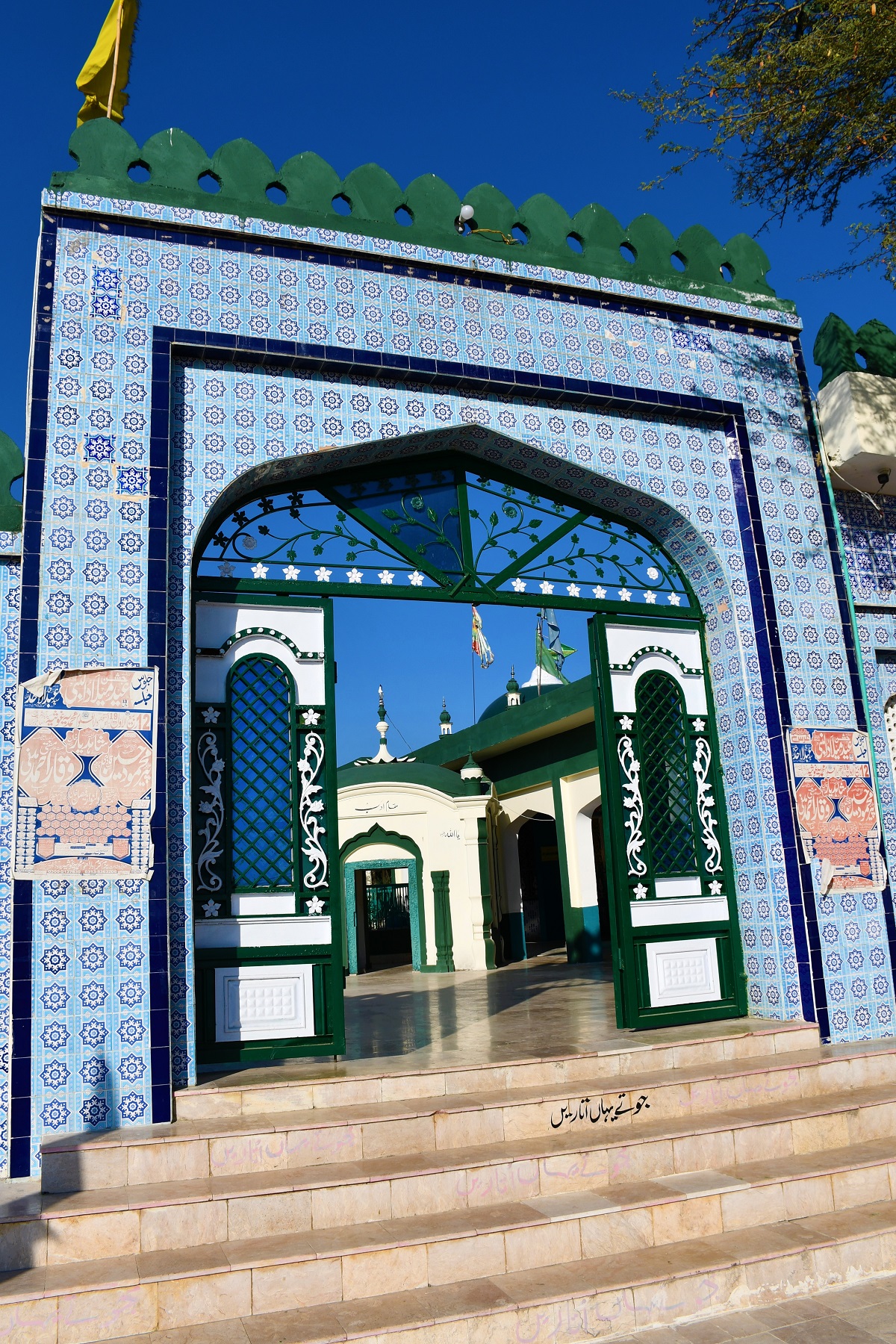
Mian Muhammad Bakhsh writes in Tazkira Muqimi (2008) about many disciples of Haji Baga Sher. However, his three deputies became more eminent whose names include Mian Faiz Bakhsh Qadiri, Sahibzada Abdul Hakeem Qadiri, and Baba Budoh Shah Qadiri also popularly known as Baba Budho Shah. Mian Faiz Bakhsh Qadiri was first buried at Khanyara Sharif in the Mirpur district. Hasan Nawaz Shah, the author of several books, writes in Gujar Khan Ke Suhrawardi Mashaikh (2013) that after the construction of Mangla Dam, his mortal remains were shifted to Dulmi village near Gujar Khan town on 19 July 1967. The shrine of Mian Faiz Bakhsh Qadiri is now one of the most popular Qadiri Sufi shrines in Gujar Khan tehsil. The second deputy of Mian Haji Baga Sher was Sahibzada Abdul Hakeem Qadiri, who was also first buried at Chakrali Budhal and later his mortal remains were shifted to Sangni Sharif, which I have discussed in the article Sangni And Its Saint on 9 April 2022, in The Friday Times.
According to Mashood-Al-Farooq, the author of Gulistan-e-Ghazi Qalandar (2004), Baba Budho Shah was first buried at Manjotha village in Gujar Khan tehsil where his bethak was located. Later his mortal remains were shifted to Paler Sharif in Mirpur district for a second burial which took place under the supervision of his chief deputy Sain Ghulam Muhammad (1858-9). Hanif Hanfi mentions the names of deputies and disciples of Mian Haji Baga Sher in his book Faqar di Akh (1991). According to him some of the prominent disciples of Baba Budoh Shah include Sain Ghulam Muhammad and Sahibzada Muhammad Syed, son of Sahibzada Abdul Hakeem. The names of the disciples of Mian Faiz Bakhsh Qadiri include Qazi Illahi Bakhsh, Syed Imam Ali Shah, Faqir Muhammad, Mian Tuli, and others.
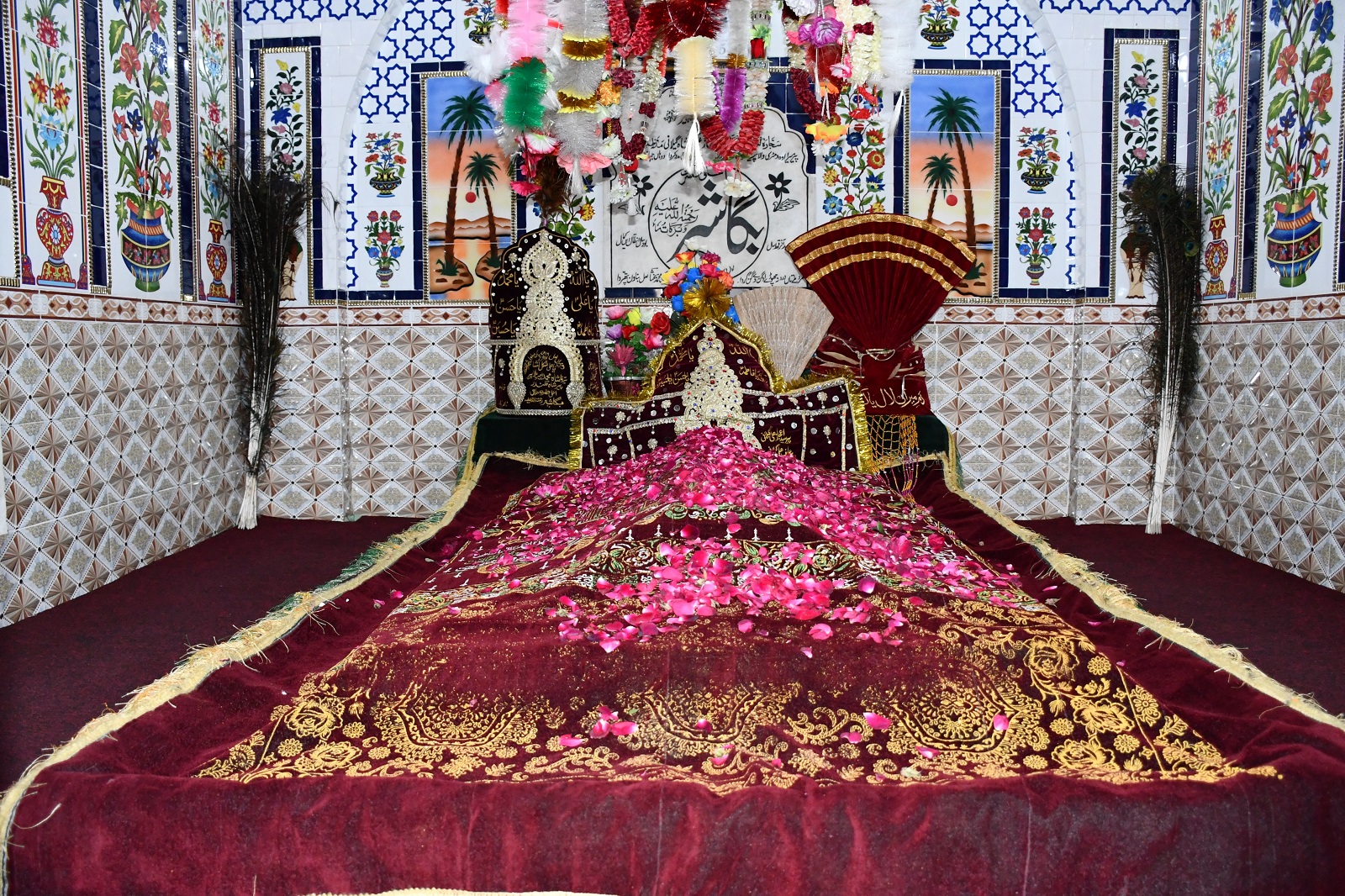
Referring to Bostan Qalandari by Mian Muhammad Bakhsh Qadiri (1920), one knows that Mian Haji Baga Sher had two wives. From the first wife he had three sons and from the second wife two sons and four daughters.
The tomb of Mian Haji Baga Sher is believed to have been erected by Mian Muhammad Bakhsh Qadiri (d.1907), the Sufi poet and the author of Sayful Muluk and many other books. According to Aftab-e-Khari, a book by Sahibzada Mian Muhammad Umer Bakhsh (2022), it was built by Mian Muhammad Bakhsh Qadiri in 1311 AH/1893 AD. He supervised the construction of the tomb. He also built a mosque near the tomb. He stayed at Darkali Sharif during the construction of the tomb complex of Mian Haji Baga Sher. Mian Muhammad Bakhsh Qadiri also built the mosque near the shrine. Both mosque and tomb have been renovated but the Persian inscription on the main doorway of the mosque which is named after him bears the date of construction as 1313 AH/1895AD. Shrine complex of Mian Haji Baga Sher is under the control of the Auqaf and Religious Affairs Department, Government of Punjab.

Mian Muhammad Bakhsh Qadiri used to pray at Darkali Sharif and chose a place outside the shrine complex where later the devotees of Mian Muhammad Bakhsh Qadiri built a dome over the place which is now known as his bethak. These bethaks (sitting places) of various saints later become shrines and places of veneration for devotees. The bethaks of various saints belonging to different Sufi orders are located in several villages of Pothohar. Not only the burial places of Mian Haji Baga Sher’s deputies and disciples, but also bethaks where his disciples halted and preached on way to his shrine, have now also become popular shrines. There are three bethaks of Mian Muhammad Bakhsh Qadiri in Kallar Syedan and Gujar Khan tehsils, one at Darkali Sharif, second at Changa Maira, and a third at Manjotha where the bethak of Baba Budoh Shah is also located. The most famous bethak of Mian Haji Baga Sher is located in Qazian village near Habib Chowk in Gujar Khan tehsil.
The deputies of Haji Baga Sher spread the Qadiri silsila in Pothohar, Azad Kashmir and other regions. Today, the shrines of Mian Haji Baga Sher and his deputies and disciples are most frequently visited by their devotees on annual festivals and many other occasions.

